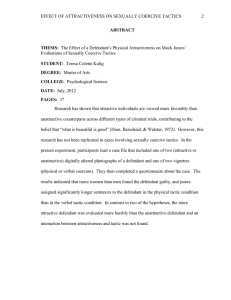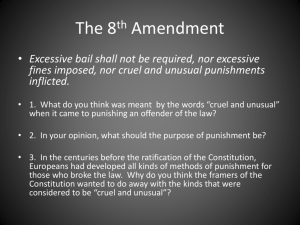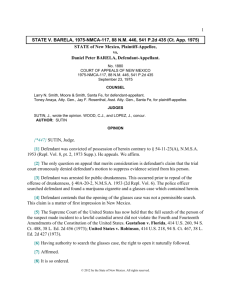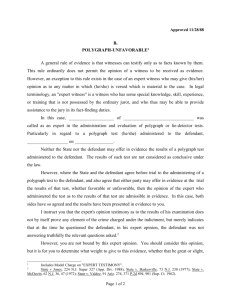Factor Analysis Exercise: Rating Characteristics of Criminal
advertisement
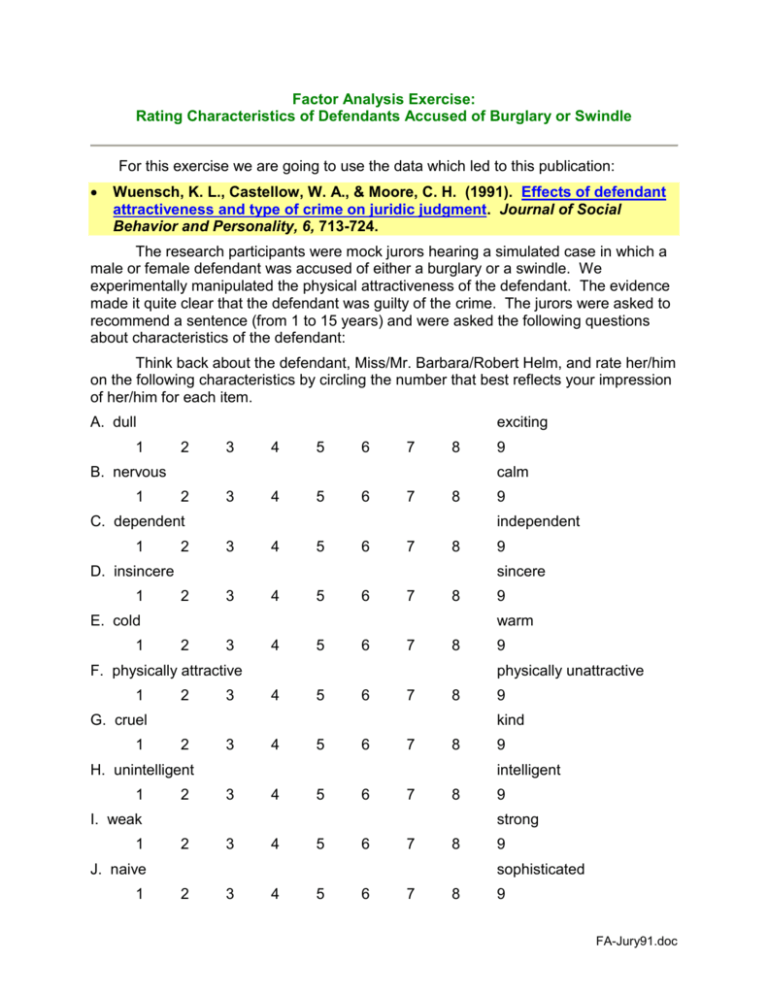
Factor Analysis Exercise: Rating Characteristics of Defendants Accused of Burglary or Swindle For this exercise we are going to use the data which led to this publication: Wuensch, K. L., Castellow, W. A., & Moore, C. H. (1991). Effects of defendant attractiveness and type of crime on juridic judgment. Journal of Social Behavior and Personality, 6, 713-724. The research participants were mock jurors hearing a simulated case in which a male or female defendant was accused of either a burglary or a swindle. We experimentally manipulated the physical attractiveness of the defendant. The evidence made it quite clear that the defendant was guilty of the crime. The jurors were asked to recommend a sentence (from 1 to 15 years) and were asked the following questions about characteristics of the defendant: Think back about the defendant, Miss/Mr. Barbara/Robert Helm, and rate her/him on the following characteristics by circling the number that best reflects your impression of her/him for each item. A. dull 1 exciting 2 3 4 5 6 7 8 B. nervous 1 calm 2 3 4 5 6 7 8 C. dependent 1 2 3 4 5 6 7 8 2 3 4 5 6 7 8 2 3 4 5 6 7 8 2 3 4 5 6 7 8 2 3 4 5 6 7 8 2 3 4 5 6 7 8 9 strong 2 3 4 5 6 7 8 J. naive 1 9 intelligent I. weak 1 9 kind H. unintelligent 1 9 physically unattractive G. cruel 1 9 warm F. physically attractive 1 9 sincere E. cold 1 9 independent D. insincere 1 9 9 sophisticated 2 3 4 5 6 7 8 9 FA-Jury91.doc K. sad 1 happy 2 3 4 5 6 7 8 K. unsociable 1 2 9 sociable 3 4 5 6 7 8 9 We shall use these ratings as our variables for this exercise. Download the file JURY91.SAV and bring it into SPSS. Conduct a principle axis factor analysis on the variables exciting, calm, independent, sincere, warm, phy_attr, kind, intellig, strong, sophist, happy, and sociable. 1. Conduct a principal axis factor analysis with varimax rotation. Obtain a scree plot, Kaiser’s MSA, and the anti-image correlation matrix. Retain all factors with an initial eigenvalue of 1 or more (3 factors). Sort the coefficients by size. Look at the rotated loadings. Note that several of the variables load .3 or more on two of the factors. I feel better which each variable loads well on only one factor. 1. Conduct a parallel analysis. It will indicate a two factor solution. 2. Conduct a MAP test. The original test will indicate a two factor solution, the revised test a one factor solution. 2. Run the factor analysis again, but reduce the number of factors to 2 and suppress the output of the initial solution, the MSA, the anti-image matrices, t, and the scree plot. Output the factor scores. This solution captures a bit less of the common variance, but it looks cleaner to me. Look at the rotated loadings and decide what you would call the two factors. 3. Make one more change. Apply an (oblique) oblimin rotation. 4. I don’t find this solution much different from the varimax solution, so I’ll go back to the varimax solution. Use an independent samples t test to make the following comparisons: a. pa_manip group 1 versus 2 – this tests the effect of our manipulation of the defendant’s physical attractiveness. b. crime group 1 versus 2 – this tests the effect of the type of crime. Karl L. Wuensch, September, 2012 Factor Analysis Exercise: Animal Rights, Ethical Ideology, and Misanthropy Return to Factor Analysis with SPSS Return to Multivariate Analysis with SPSS



